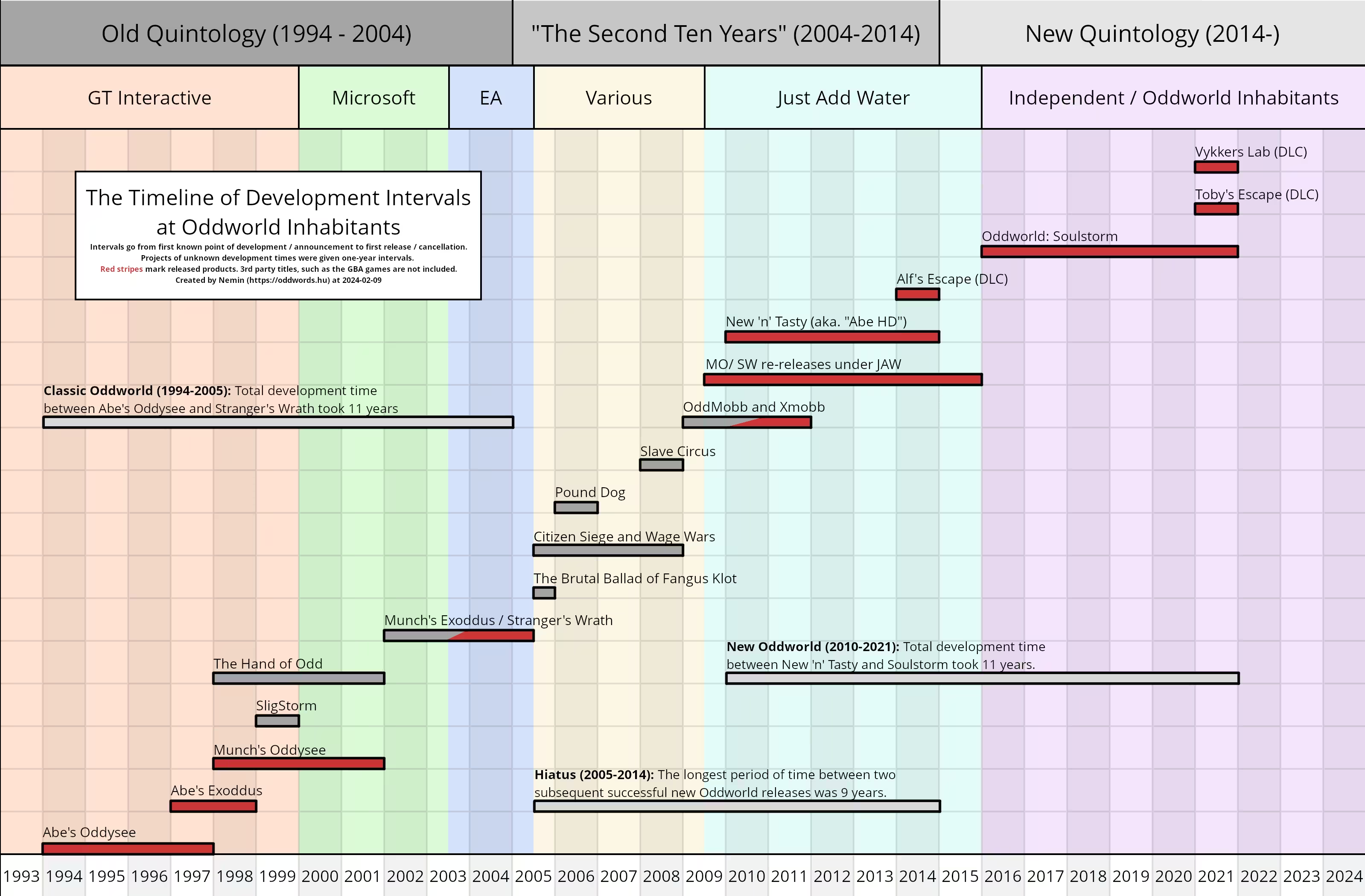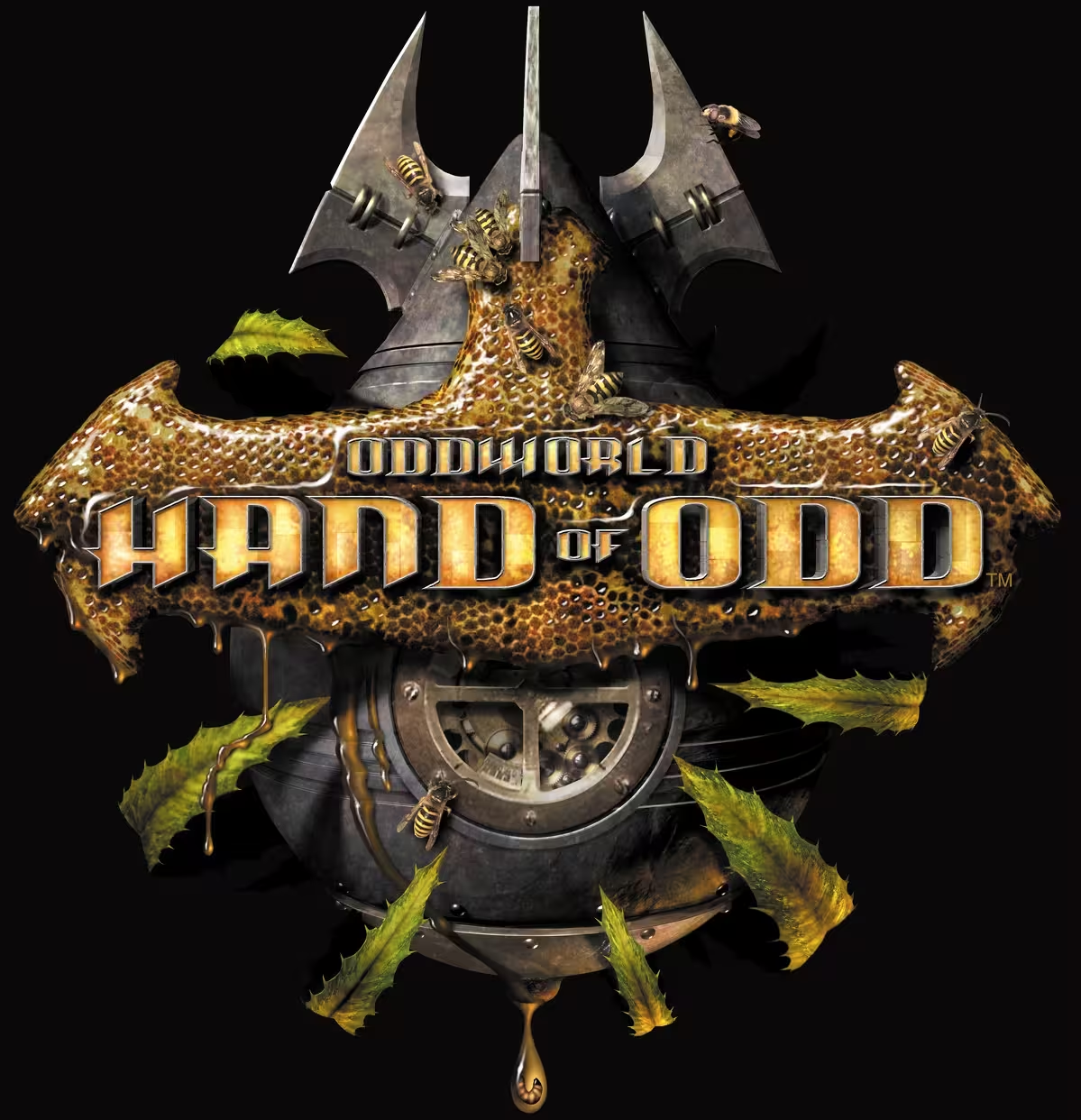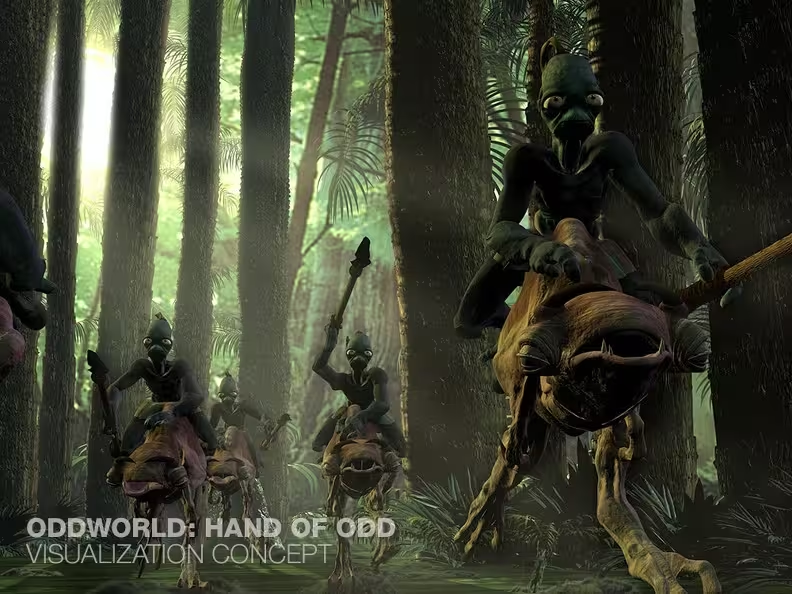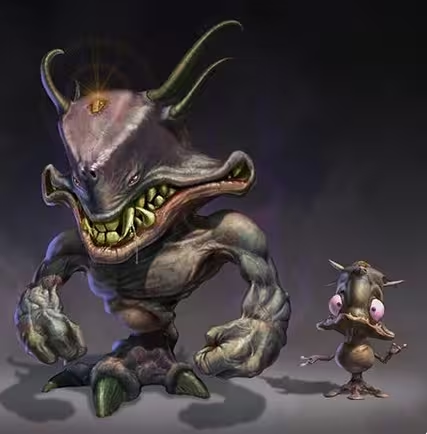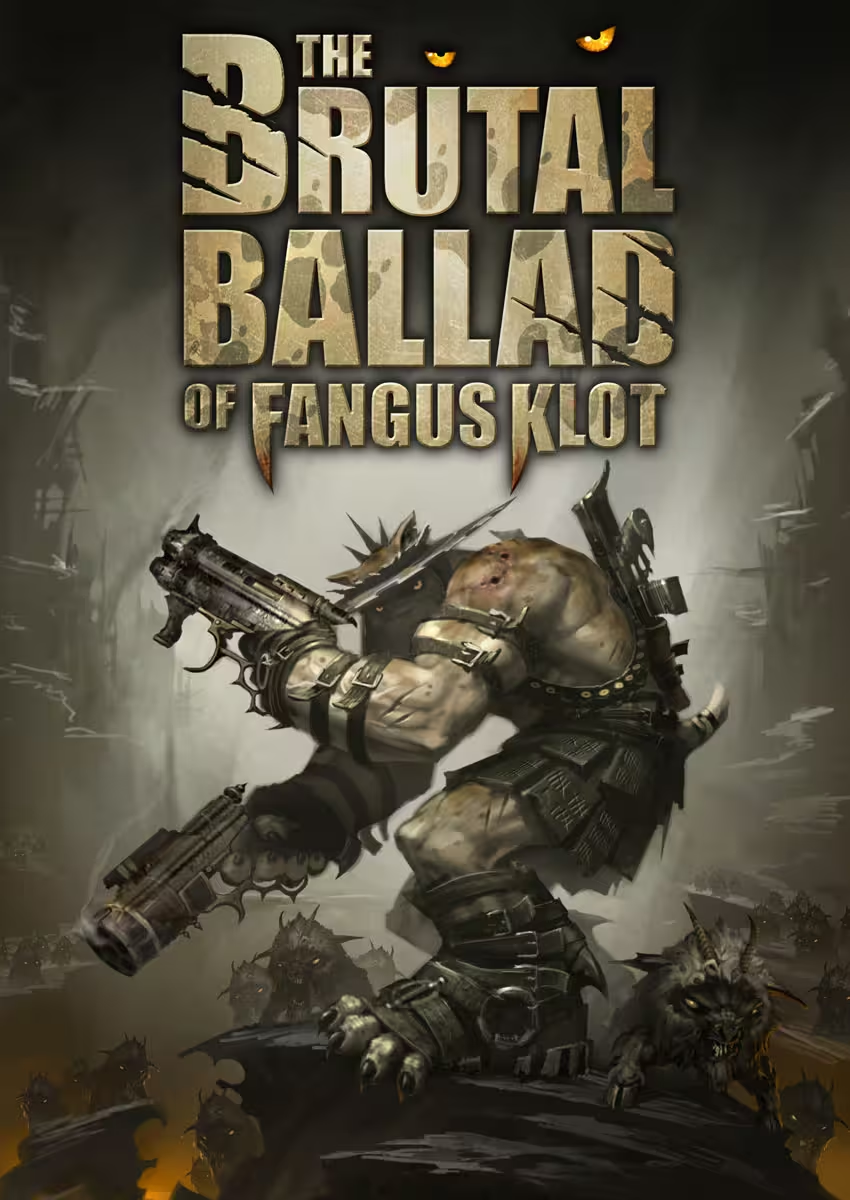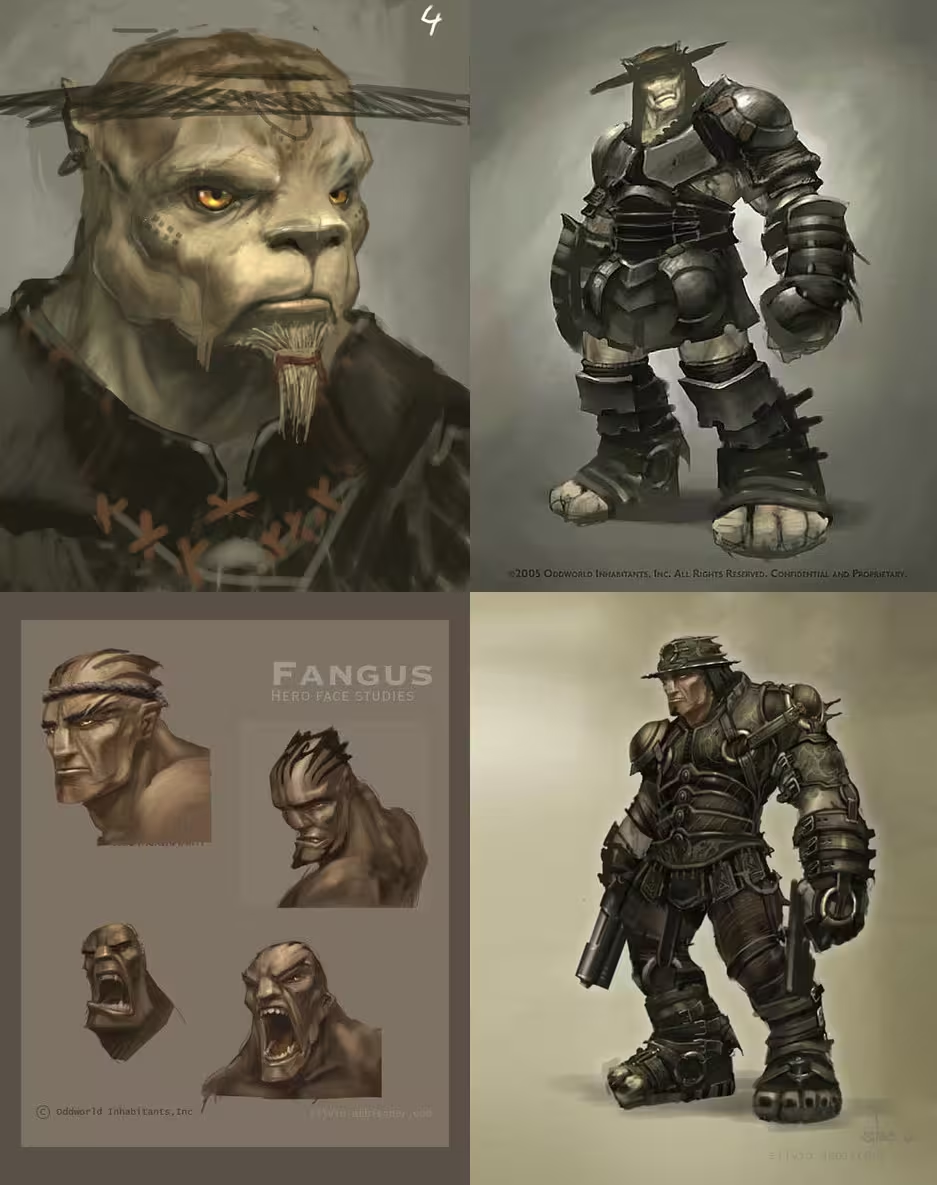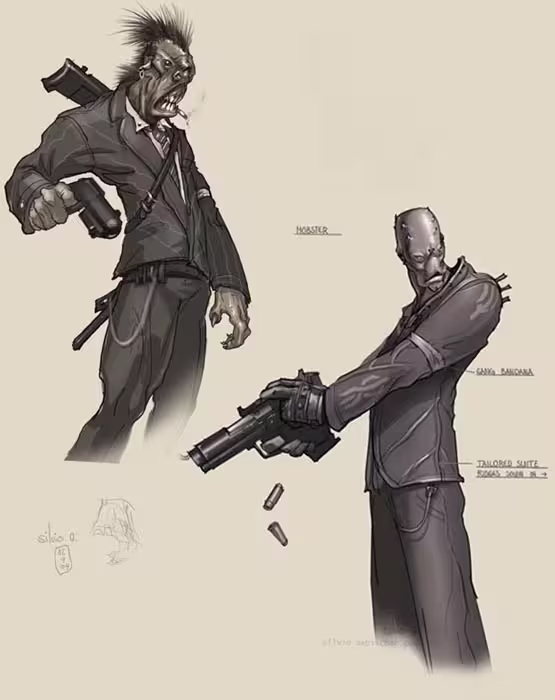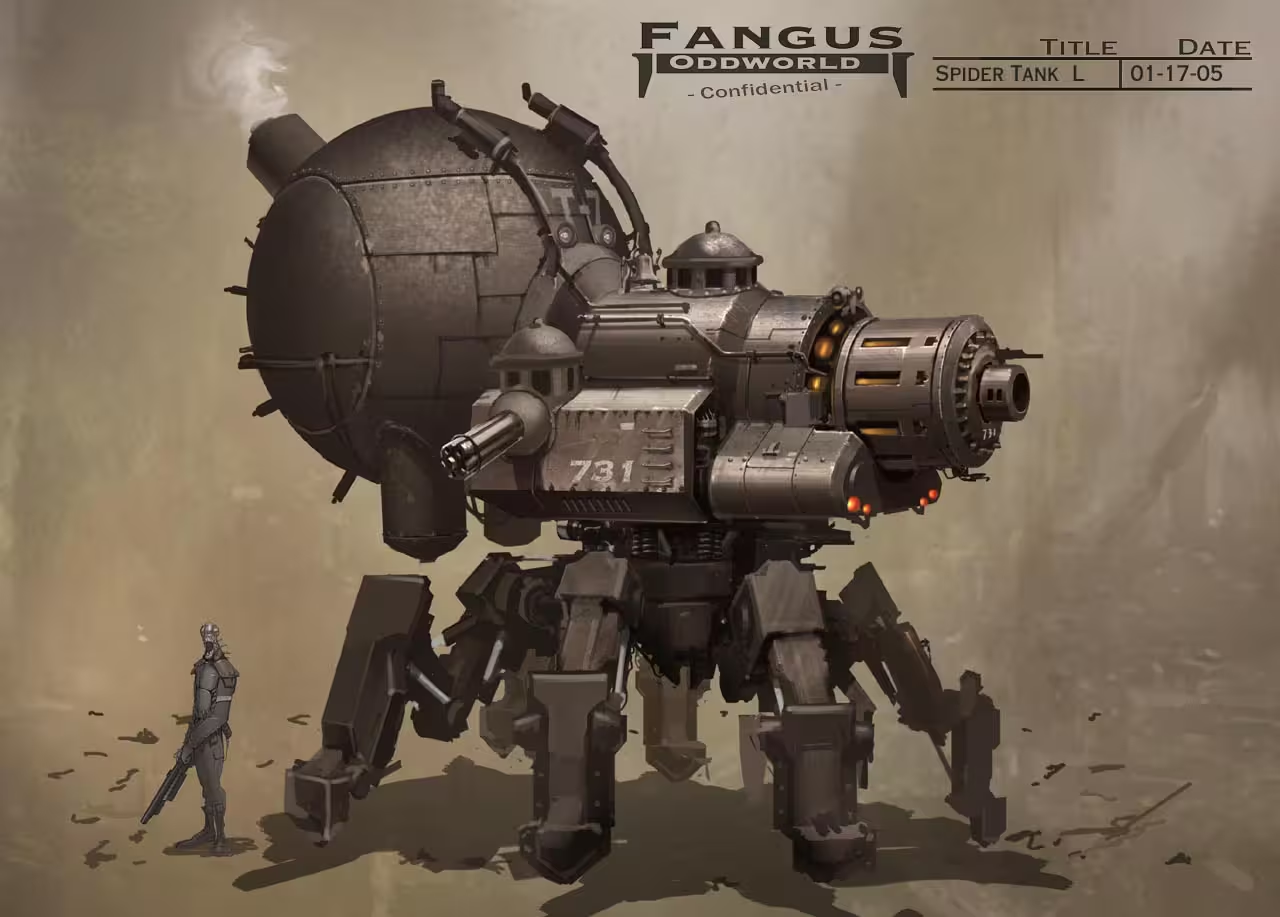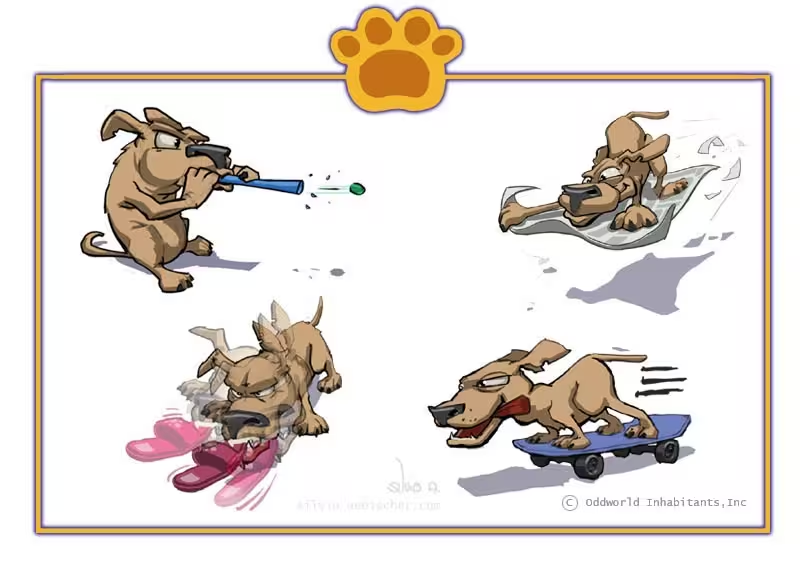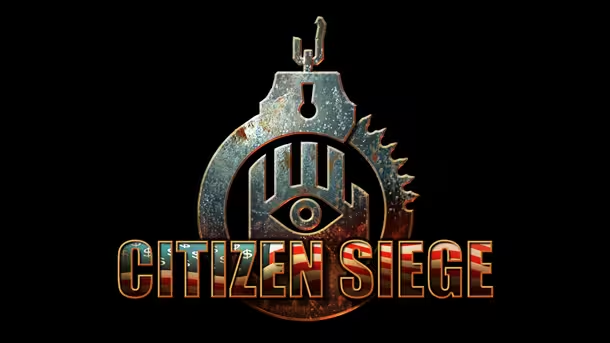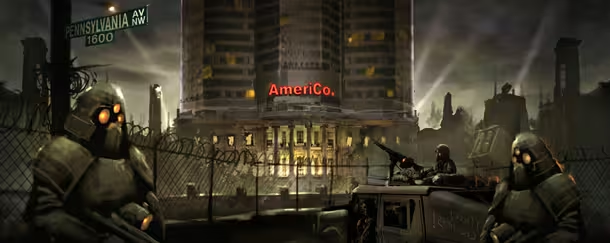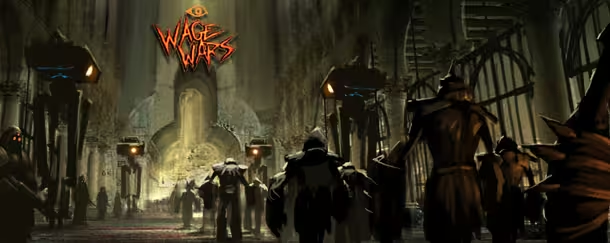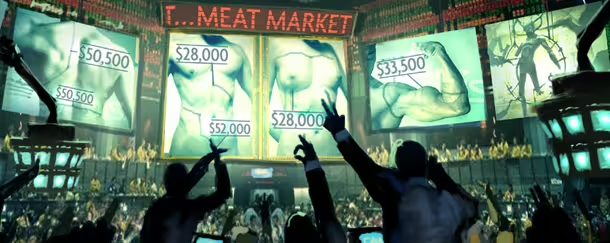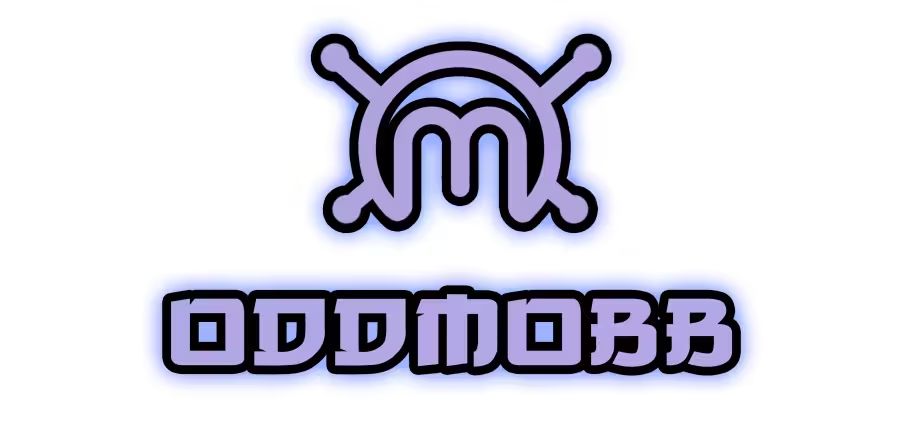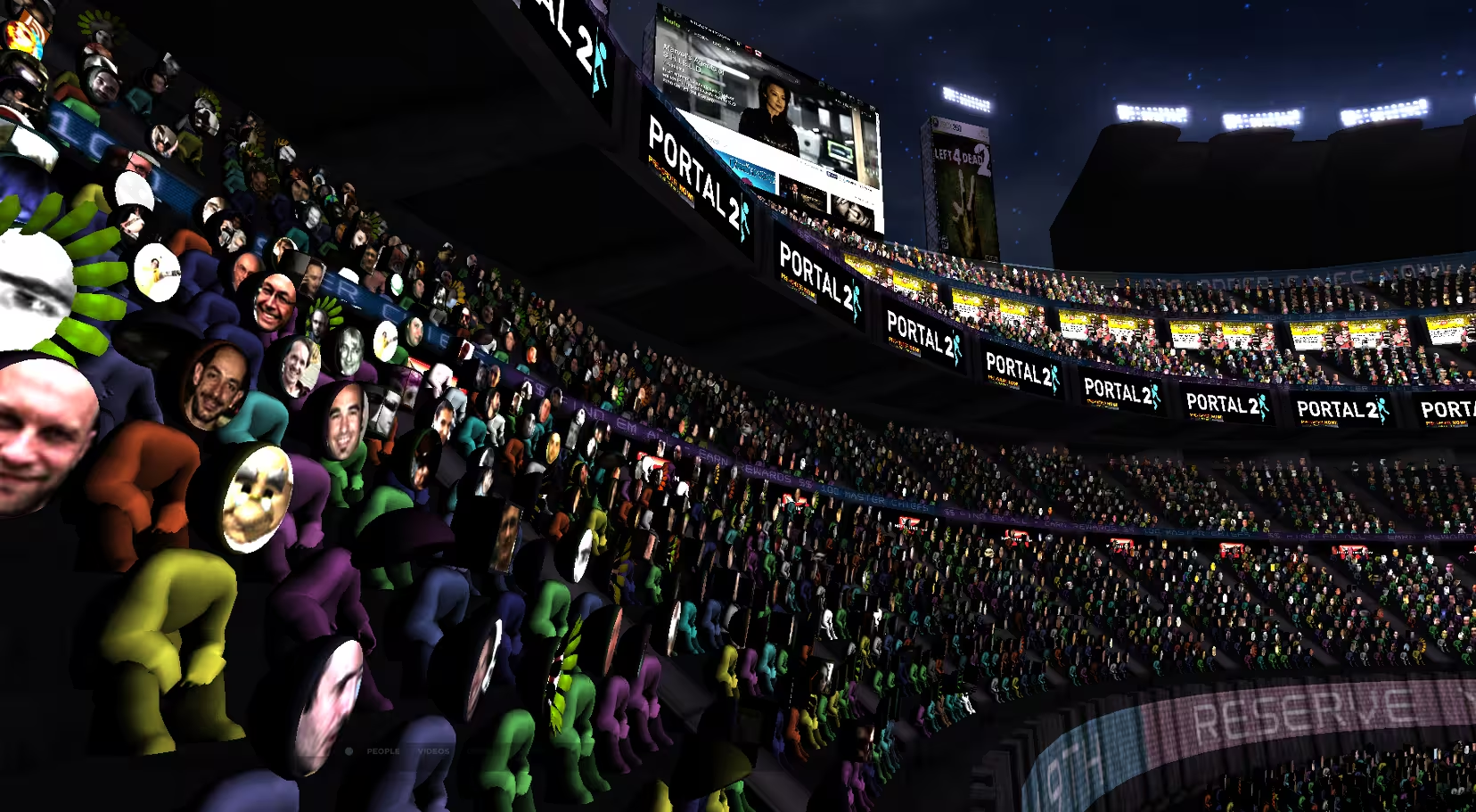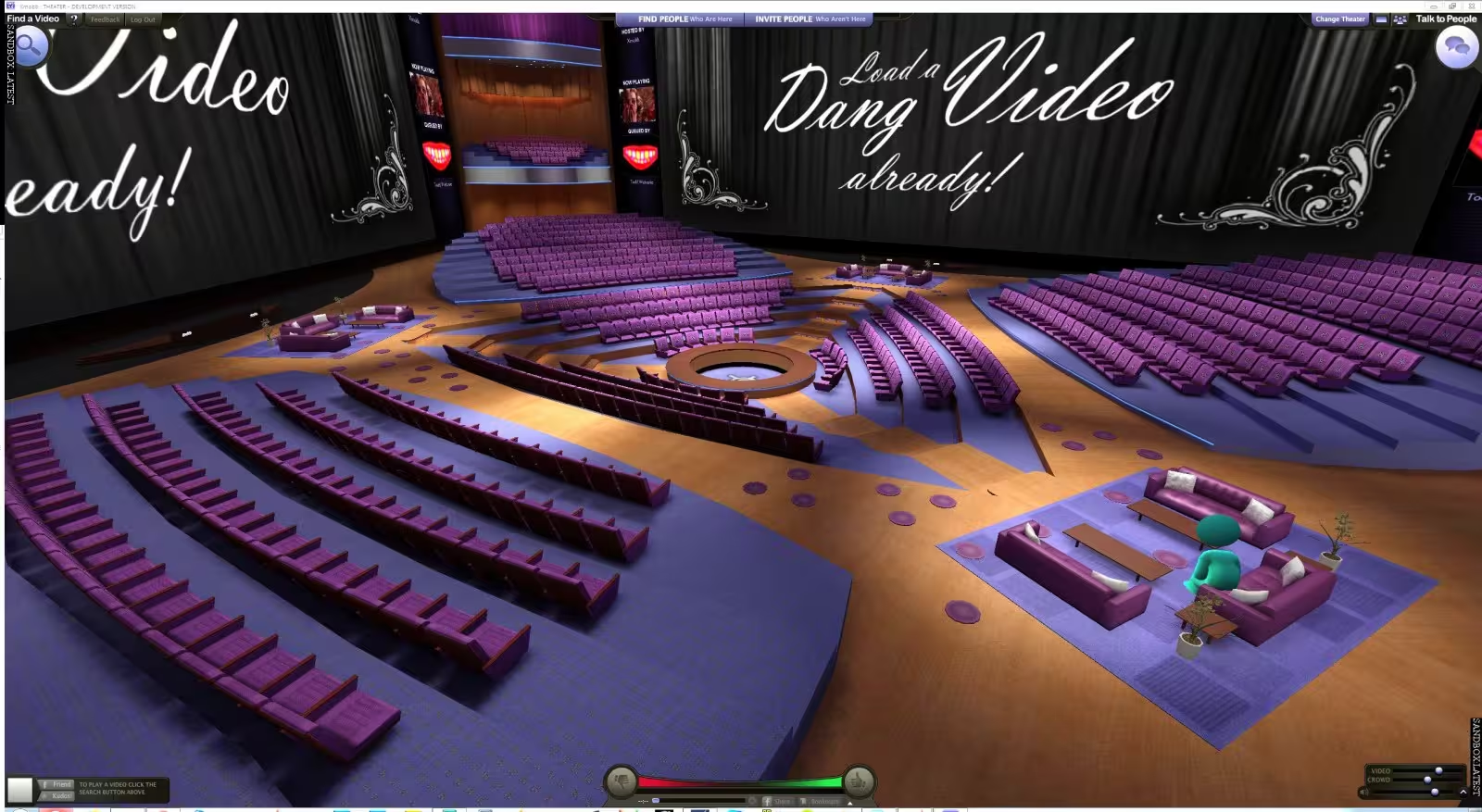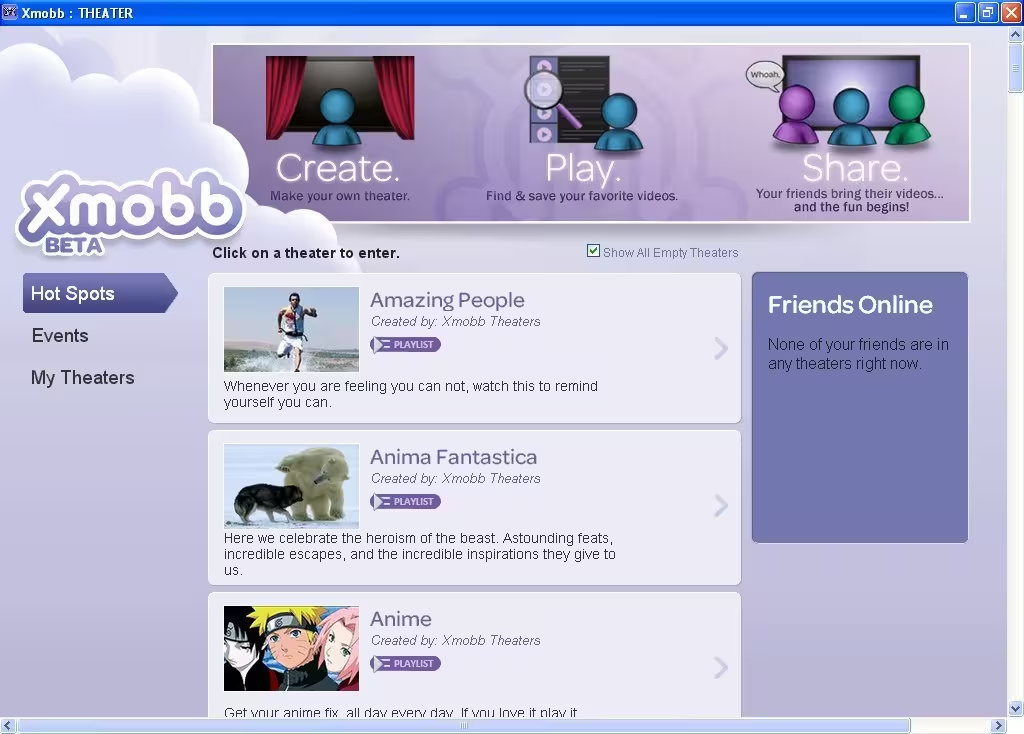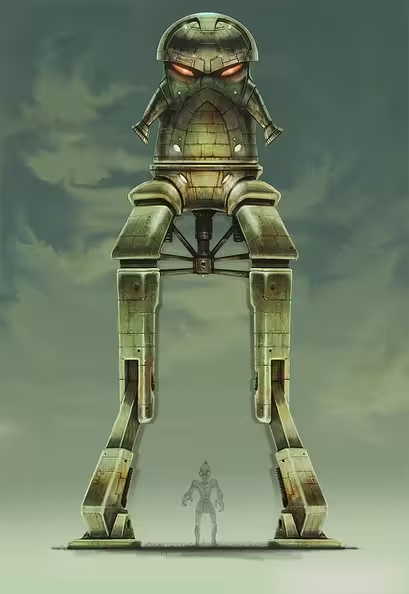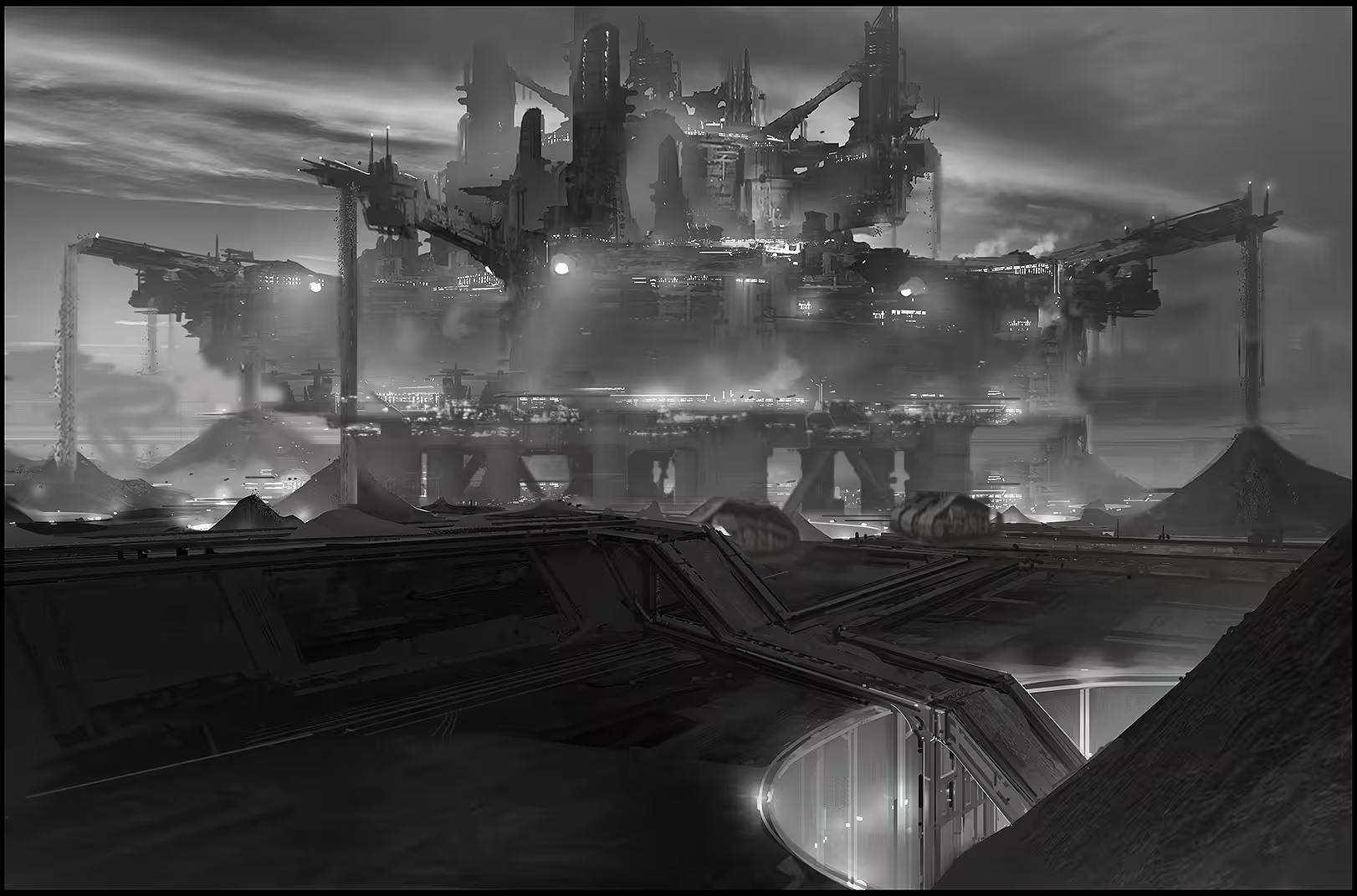The History of Oddworld Inhabitants: The Second Ten Years (2004-2014)
In the series’ first art-book, The Art of Oddworld Inhabitants: The First Ten Years, Ballistic Publishing went into great detail to explain the roots of Oddworld Inhabitants, their rise to fame, the unrealised dreams of Munch, and the (at the time) future prospects of Stranger and his game.
The second book, Abe’s Origins, details even more of the company’s heydays, by presenting even more concept art and by continuing the trend of hinting at (at the time) future content, only this time in the form of previously-unseen art of Soulstorm.
Both are fine sources if one wishes to learn about a very specific period of Oddworld Inhabitants, namely between about 1994 and 2004. The exact years could vary a little bit in both ways, but the point is around the time Stranger’s Wrath released the water suddenly became muddy and the line of events uncertain.
Arguments become far more confused, names such as Xmobb and Fangus are thrown around without genuine understanding, and the discussions become steeped in hearsay and superstition. Some even circulate false claims, such as OWI being closed still, despite this not being the whole truth. And many have no idea what Lorne Lanning and co. were doing during these years beyond vague keywords and and even vaguer ideas.
As its title implies, this article intends to shed some light on the subsequent history of Oddworld Inhabitants, starting from the era of Stranger and endings at the company’s rejuvenation by Just Add Water.
Disclaimer: As much as I’ve tried to work with due diligence (hopefully the length of the article makes the amount of effort put into it clear), I’m still only human and it is certainly plausible that I’ve made a few mistakes. If any of these are later caught, I’ll be sure to correct them in the post.
Also, while I strove for a largely objective presentation of the events, the primary sources of this article are regardless mainly interviews by people who had stakes in the survival of the company. Therefore there will inevitably be some bias present. I tried to minimize this by choosing a variety of sources, but there is only so much I can do.
The commentary presented along with the sources are my own opinions, informed by piecing together roughly a decade’s worth of information. Except for typesetting changes and occasional (marked) cuts, the words of others are presented verbatim.
With this in mind, it is my genuine hope, that this article will present a much clearer perspective to those, who might only have vague or no knowledge about what went down during this roughly one decade long period in a format that’s far more approachable than trying to manually gather all of this information from 20-25 different sources.
(The article will also contain a few sections titled “Aside”. These recount projects which are not necessarily relevant to the main “story” of OWI’s history, but still fit chronologically into the given chapter. I wanted to include these to create a rough timeline for fans who are curious what followed what.)
Contents:
- The History of Oddworld Inhabitants: The Second Ten Years (2004-2014)
Backstory (1994-2004)
Just like all good Oddworld games and Munch, this post too will begin with a backstory section.
It is not a question that, after Stranger’s Wrath released, Oddworld Inhabitants and, indeed, the series itself largely disappeared from the public eye. Many attribute this “death” to Electronic Arts’ tragically poor marketing management, but I believe with the information we have from the time period, the root cause is a little more nuanced and knowledge of the past is important to understand why things happened the way they did.
Therefore this section will be a fast-paced recap of OWI’s years between 1994 and about 2004. If you’re interested about this period in more detail, I recommend reading the two art-books mentioned in the intro.
The GT Interactive / Infogrames-era (1994-2000)
It is common knowledge, that Oddworld’s first publisher was GT Interactive (which after a series of mergers and acquirements became Atari Inc., the company’s American branch, it’s a wild story), who helped OWI release Abe’s Oddysee and—upon its unexpected and massive success—subsequently Abe’s Exoddus.
Though some like to say GT was the source of OWI’s troubles, with them forcing a sequel before Munch’s Oddysee, I personally heavily disagree. Though obviously still a profit-oriented publisher, the company initially proved to be a very accommodating partner. For instance, one of OWI’s former employees, Michael Madden, who worked as a game designer on Abe’s Oddysee and Exoddus, recounts the following about the development of the latter_
Michael Madden: […] Everyone just absolutely killed themselves to meet it, because they all believed in it. Everyone that worked there loved it as much as those that created it and owned it.
Even Lorne Lanning himself later said:
Lorne Lanning: Abe’s Oddysee was true to the vision. Abe’s Exoddus was true to the vision even though we referred to it as a “bonus game”.
Exoddus was evidently a popular project with Oddworld and I believe the final game’s quality speaks very clearly about this. What’s more, Madden in the same video also recounts this:
Michael Madden: We were working with GT Interactive at the time. Um, and and even that was a very unique experience that I’ve never seen again. Um, Oddworld [Inhabitants] somehow was able to, uh, to negotiate that the publisher, who was paying for it, I believe I’m not sure, I was obviously a junior didn’t have insight into financials, um wasn’t allowed in the building, unless invited. They couldn’t come in and check up, they couldn’t do anything they just had to wait for a milestone and accept the milestone. They had no oversight, no nothing, they had no control.
Another ex-employee explains how half of the budget for Abe’s Exoddus went into the creation of the Oscar’s gamble:
Planet Blonde: […] so they entered an Abe’s Exoddus short for an Academy Award consideration and it took about half, a half of the game’s budget to create that short and it was, it was pretty awesome.
I don’t think it’s necessary to explain that blowing half of your budget on a publicity stunt like that is not exactly without its major risks. The fact that GT allowed OWI to do this doesn’t exactly invoke the image of draconian laws and dystopian strictness in my mind.
I believe it’s safe to say this era was the most successful period of OWI’s history. Oddworld was not a niche indie game series, rather a household name selling millions of copies, with a publisher, who (though demanding) accommodated their needs fairly generously.
However, even this early, dark clouds were already gathering on the horizons.
Aside: SligStorm (1999?)
As Paul O’Connor explained in 2000, SligStorm as a title began and ended around 1999:
Paul O’Connor: SligStorm is vapor. It’s a title I made up when pitching a bonus game for a proposed Abe’s Oddysee/Abe’s Exoddus omnibus re-release for Sony Playstation. SligStorm was going to be a brief game where you played an outcast, albino Slig grub that needed to blast it’s way out of a Slig birthing complex. The window to do that particular game closed about a year ago, as we’re now firmly committed to PS2 …
I wanted to include this, despite it not having to do too much with the main topic of the article, both for the sake of being comprehensive and because I want to create a rough timeline for anyone interested in the what-came-when. For more information, please see my post about OWI’s unreleased games.
It is kind of funny how long it stuck around in fan consciousness despite being described as vapour even by the person who came up with it, but I cannot fault anyone for it. The idea of playing as a Slig protagonist is certainly intriguing and it’s one I too really wish OWI revisited.
Aside: The Hand of Odd (1998-2002?, 2011-2012)
Of all the cancelled projects, I personally find Hand of Odd the most intriguing in terms of development history. By all testimonies, it was a game that, despite undergoing a ton of changes, had perhaps one of the most thought-out designs and yet despite two teams attempting it, it never ended up happening.
While the game was only officially announced during 1999’s E3, development on it began alongside Munch:
Ivan Trembow: When did development of The Hand of Odd begin, and when do you think it will be complete?
Lorne Lanning: It began alongside the development of Munch, but it will release about six to nine months after Munch does.
What exactly the project entailed is a matter of great confusion in the fandom since, as the years progressed, communication from OWI varied about the scope and execution of the game. In the same interview as above, this is how Lanning describes the game:
IT: Everything I’ve read about The Hand of Odd loosely defines it as a strategy game, but can you get more specific on what you’ll have to do in the game and how you’ll go about doing it?
LL: It’s certainly not a strategy game, although when compared to any other type of play experience out there… I guess it’s most easily compared to strategy. Imagine building your estates, franchises, communes, and investments, then defending them against other players who are doing the same, or trying to acquire other players’ developments. Now imagine doing it through hundreds of characters that are being controlled not by a mouse, but by GameSpeak-using central characters. It’s hard to define because it’s so different from what’s out there in games. I guess Black & White comes the closest to even treading on this type of territory.
A year later in 2000 Alf through Dear Alf said the following:
Can you tell me anything about The Hand of Odd, other than that it is a multi-player game that is coming out after Munch’s Oddysee?
Alf: Hand of Odd is about us using the technology of Munch, enhancing upon it, and bringing it into the multiplayer world of gaming. How many players will be able to interact at one time is still yet to be determined. If we can get 8 players at one time for Hand of Odd we will be happy. It will be enough. If we can get more we will be ecstatic.
Hand of Odd will not be an online community in the way that Everquest or Ultima Online are. But we do plan to take advantage of features like downloadable units that will help to keep the world fresh even after it’s been out there awhile. Our most important function will be speed. We’ll take advantage of as much as we can until update rates become an issue. There as so many questions that relate to the multiplayer Internet capabilities that are yet to be answered technically, that we can’t lock down to the degree that we would like yet.
What can you tell us about the story and gameplay of Hand of Odd?
Alf: Think eco-extremists versus corporate greed. It’s Exxon vs. Greenpeace and you get to choose which one you want to be. There are three sides, or ideologies, wrapped into one playing field. You will be able to choose between one of three master characters for three different races. Each of these three characters will have the ability to control masses of their own kind. Each of the three has interests that conflict with the others.
It can be played competitively, or cooperatively, or you can just exist and experiment while nurturing a particular world. You may choose to have full-scale conflicts, or just make a lot of moolah via destroying it. We are also out for something that can be left on and grow while you’re not even home. We’re after fully persistent universes that have a life of their own. Eco-system simulation is a big part of the next level for the Oddworld games. We really want you to take ownership of the world, and then deal with the inevitabilities that arise out of your behavior of your forces.
Interestingly, while HoO never ended up being an actual game, it still had a visible impact on Oddworld Inhabitants. Namely on their previous logo:
Xavier: What is the story or meaning behind the two little fetuses in the OW logo?
Alf: The twin fetuses have long since been absorbed into Oddworld lore. The caliper and test-tube motif for the Oddworld logo was created for a brochure for the 1999 E3 convention. At the time, we were working on two games simultaneously; Munch’s Oddysee and Hand of Odd. As time went on and the gears of corporate commerce kept turning, Hand of Odd faded away and Munch’s Oddysee became the sole focus of production. In the end, Oddworld gave birth to a kicking and screaming Munch’s Oddysee only. This is the history of the twin fetuses.
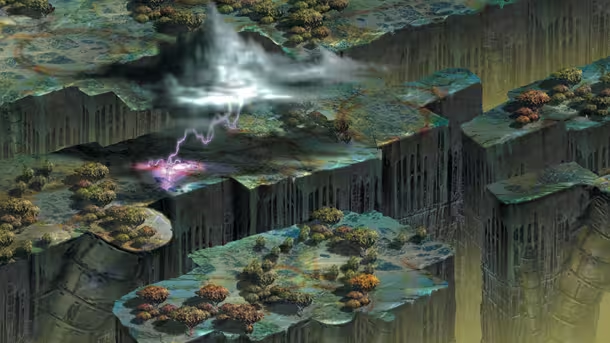
Many assumed Hand of Odd would be a FarmVille-esque city builder. A rumour OWI and JAW vehemently tried to dispel
Later, during OWI’s partnership with JAW (see the last section of this article), Hand of Odd was once again brought to light, as one of the projects the two companies wished to realise:
InGamer: Do you think that’s an indication that future Oddworld games might be more socially-based than their predecessors?
William Bunce-Edwards: Some of them – as appropriate. We’re beginning development on Hand of Odd, which is an RTS-like game but is perfectly suited to the more modern release philosophy which is small ongoing development that people have access to early on. We can’t really give away any hints about it, we’re still far too early in development process. What I want to stress is that it’s not going to be something like Farmville in regards to social gaming. That kind of ethos and “gameplay” just isn’t what we’re after at all.
InGamer: Just touching on that – you mentioned Hand of Odd, which is an Oddworld strategy game that has long been rumoured among fans, does that mean it will eventually see the light of day?
William Bunce-Edwards: Absolutely. Hand of Odd is a game we’re going to be working on. We’re hoping for an early release in some form next year, with development ongoing.
This time Stewart Gilray described the game as a far more traditional C&C-like game, albeit also stating the exact genre was up in the air:
Edwin Evans-Thirlwell: Hand of Odd, the aforementioned real-time strategy project, summed up by Gilray as a highly politicised Command & Conquer style experience that pits a familiar assortment of species against one another in isometric view. We’re presented with a fearsome design tome during the chat – page upon page of intricate notes on resource management systems, unit behaviour and tech trees coupled with cutaway drawings of levels.
Gilray is ambivalent about the idea, noting that strategy games and consoles aren’t the best of bosom buddies, and suggests that more concept work is necessary. “Maybe it evolves into an MMO type of thing, we don’t know yet,” he says. “We keep tossing around ideas for it. The thing that turned me onto Hand of Odd the first place was the teaser footage back in the ’90s, when they had swarms of Sligs and stuff – to do a game with those sorts of crowds would be fantastic, but I’m not necessarily sure that a Command & Conquer: Red Alert kind of game is right for it.”
In an interview from March 2013, while the original 2012 estimate fell through and he did not to give an new time-frame, Gilray was still positive the partnership of JAW and OWI would eventually recreate all the abandoned projects, including HoO:
Games Abyss: […] So what’s next for the series? Will Hand of Odd see the light of day? Aside from HD remakes (which we love) what original Oddworld adventures can we expect to be released?
Stewart Gilray: Oddworld Inhabitants is basically rebuilding from scratch. We’re using the HD remakes as a means of funding the company’s future projects. […] But, yes, we still have plans to finish all the originally announced projects, including the Quintology.
Yet, just a month later in April of 2013, he said the following:
Media Snobs: Can you tell us about how Hand of Odd will stand out compared to other RTS games and other free to play games?
Stewart Gilray: We don’t have anything to say about Hand of Odd at the moment. We’re focusing on getting New ‘n’ Tasty out the door!
Though in and of itself, this doesn’t directly say that HoO was canned, an interview by Oddworld content-archivist site, Magog on the March with Gilray pretty much confirms that the project never quite left the ideation phase:
Magog on the March: How serious were the discussions to finally develop “Hand of Odd” and other abandoned Oddworld games, such as “Fangus”?
Stewart Gilray: Lorne and I spent a lot of travel time talking about Hand of Odd, and we had some ideas for it. I’m not sure if it will ever be un-shelved. As for Fangus, having seen the assets and the project, I would LOVE to have seen it finished, no idea if it ever will though.
For the sake of thoroughness, here is the last time we have heard of Hand of Odd. In his EGX 2017 interview Lorne Lanning once again mentioned the project, this time also utilising the RTS comparison:
Lorne Lanning: First, RTS was largely the same model as I perceived it as a genre, which was two opposing sides depleting an environment until there’s nothing left and whoever uses that environment in a weaponized way to beat the other wins in an apocalyptic landscape. “You won! … in an apocalyptic landscape.”
But I was like: “What if one side was harnessing the forces of nature the way Yoda would and the other side was doing the industrial model.” So one is growing, one is raping and harvesting. And the idea of Hand of Odd was that balance. So one was empowered not by chopping down trees but would use the power of the spiritual energy in trees [which would become] something you could harness, a power, and the other tribe is trying to chop it down. So you had this different dichotomy of conflict, introducing more opposing approaches to a single RTS playing field. So that was Hand of Odd.
This is also where he recounts the famous LAX bathroom story, where the then-CEO of Activision, Bobby Kotick told him that RTS games are a dead in the water genre, causing Lanning to have serious second thoughts about the feasibility of the project, which eventually led him to once again shelve it indefinitely. The story can be found in the interview above.
The Microsoft years (2000-2004)
As many know, especially those who were personally affected by the situation, Munch’s Oddysee was originally meant to release on the PlayStation 2, under Sony and GT Interactive. However, as it turned out, things with GT were not meant to last. Early after Exoddus’ release, unhappy with their situation, OWI began to seek greener pastures:
Game of X: Initially, when McKenna told GT that they were seeking a buyout partner, they were given the go-ahead. So in late 1998 McKenna began having secret meetings with Steve Schreck, who was a product planner for Microsoft. Although they were also speaking with another publisher, the meetings with Schreck were going very well, so well in fact, that they came to a verbal agreement that Microsoft would buy out GT’s share and enter into a first-party publishing deal.
GT, however, was itself looking for a buyout and to keep their portfolio more appealing, denied Oddworld’s sale. The company was then acquired by Infogrames (which itself later became Atari Inc.), making it Oddworld’s new (albeit very temporary) publisher. As Game of X explains, Lorne Lanning, fearing rumours that Infogrames would cut games with big budgets, decided to pull a marketing trick:
Game of X: Lanning performed what he called “a jujitsu.” From his days working in the aerospace industry, he remembered that they often created “visualizations” of future products. So what Lanning did is have his crew pre-render game scenes from Munch. Because these scenes were not rendered in the PS2 devkit, but were simply “visualizations” of their product, it was perfectly legal for them to share them, which they did.
If you’ve ever seen those videos on YouTube touting “demo footage” for Munch, you’ve most likely seen one of these “visualisations,” i.e. little more than official 3D animations / mock ups sold as gameplay footage. I’m personally really not a fan of this stuff. One might argue such tricks were necessary for Oddworld’s survival, but I can’t help but feel like it was false advertising as little, if anything of these visualisations ultimately ended up in the game, but I digress.
I’m obviously abridging a lot here and I encourage everyone interested to read the Game of X article linked above for the whole picture. It presents a much more detailed look into the wild dealings that had undergone before—one way or another—Oddworld was finally swooped up by Microsoft. With this, Munch’s Oddysee became a first-party title for the brand new Xbox, and Microsoft even promised OWI a multi-game publishing deal.
Another reason why OWI wanted to go with Microsoft specifically, was due to technical issues. Despite running on the cross-platform GameBryo engine (the very same that Morrowind uses!) the PlayStation 2 didn’t prove strong enough to do everything OWI wanted to do. Lanning hoped that with the Xbox’s stronger specs all these issues would go away:
Lorne Lanning: ‘Look, if we get on the Xbox devkit, all of these performance problems go away.’ And then we get onto the Xbox and we were running at the same performance. So we had a big problem.
Ultimately, this proved to be a bigger issue than anyone had anticipated. Due to the looming deadline of the console’s launch and the staff’s inexperience with the new hardware, OWI had to cave and ask Microsoft to send their own developers to look at the code and fix what they couldn’t. Microsoft diligently did so, as they had staked quite a bit on Munch’s success as a launch title.
The bugs were fixed, the game was shipped.
And a success it… wasn’t? Oh dear.
Electronic Arts (2004-2005)
While these days Munch’s Oddysee is generally known to be Oddworld’s weakest installation, around the game’s release its reviews were actually remarkably positive, often reaching scores of about 80 or higher. Yet, despite the reviewers’ favour and despite Microsoft’s initial willingness to make Oddworld a part of its line-up, Munch ultimately did not manage reach the expectations being a launch title set.

Despite its initially shining reviews, these days Munch is consistently OWI’s poorest rated game, scored 2.6/5 by ~275 people, followed by Soulstorm, which received a 3.2/5.
The exact details are probably forever confined to confidential company documents and arguments behind closed doors, but I imagine the fact that OWI—despite the financial and technical help provided by Microsoft—could not deliver a product that won the hearts of the audience turned them into more of a liability than an asset worth keeping.
The only concrete thing we know (as much as one can call it concrete) was this vague allusion by Lanning:
Tom Russo (EGM): Let’s talk about Stranger, your last game. Wasn’t it going to be an Xbox first-party exclusive?
Lorne Lanning: It was set to be, until [former Xbox head of first-party] Ed Fries left, and the whole world changed at Microsoft, and then the game went to EA.
Either way, whether due to poor sales, a change of leadership, or some other reason, OWI’s multi-game deal was null and void. It might seem obvious that these catastrophic days were what ultimately killed Squeek, however, it turns out Microsoft’s meddling wasn’t what derailed the Old Quintology.
As Wil Bunce-Edwards (known online as Wil) speculated on the Oddworld Forums Discord, that the basis for Stranger’s Wrath was in fact an abandoned sequel to Munch, titled Munch’s Exoddus:
Wait, [Munch’s Exoddus] evolved into SW?
Wil: From what I’ve pieced together, yes. It went something like:
- How do we make playing as Munch feel more powerful in our game about the Mongo River?
- We’ll give him a mount (see https://www.instagram.com/p/Bm1JOp6nwYL/ and https://www.instagram.com/p/Bm3vTbxnFyA/)
- If a mount makes Munch feel powerful, let’s let people play as the mount.
- The mount can shoot.
This was confirmed by the findings of Mark Snowden, who noticed, that the directory for the leaked beta of Stranger’s Wrath was curiously named “Exoddus”, before stumbling upon an interview with Stewart Gilray, the late CEO of JAW, stating the following:
Stewart Gilray: Stranger’s Wrath was Munch’s Exoddus, and actually there is a build somewhere, on Xbox, which has Stranger and Munch hopping round the world. And it’s like OK, this is a bit weird now.
One might speculate whether or not OWI would have returned to Squeek if Stranger ended up being massively popular, yet one thing is clear: The laser-focus to get the five part epic out was wholly replaced by pragmatism at this point.
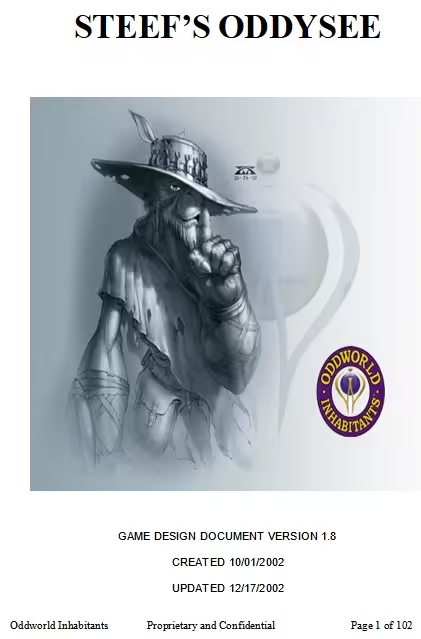
The cover of this design document provided by Wil gives us a rough estimate when the development of Stranger’s Wrath began
And even all that was for naught, as—despite already working on Stranger’s Wrath—Microsoft simply let Oddworld Inhabitants go:
Mike Leonard (allXbox.com): For the follow-up to Munch’s Oddysee, Oddworld Inhabitants decided to go in a slightly different direction, adding a heavy element of a first-person shooter and a more prominent accent on action rather than puzzle-solving, but for reasons that have yet to be revealed, Microsoft Game Studios, the Xbox’s first-party publisher, decided to let Oddworld Inhabitants out of their publishing deal for the new game – originally titled Oddworld: Stranger – early in 2004. It was an unusual decision, particularly since Lanning had publicly been very supportive of the Xbox as a developer, but no one seemed too concerned that a franchise as interesting and well-liked as Oddworld would have a rough time finding a home.
That new home turned out to be no other than the infamous devil of video game publishers, also known as Electronic Arts:
HomeLAN: First, this is the third publisher for the Oddworld series of games. What made you guys decide to go with Electronic Arts as your new publisher?
Lorne Lanning: Yes, it was a big decision and not one that was taken lightly. It took a lot of deliberation, but in the end, EA was the one publisher that stood out as really serious about creating a new IP and giving us the creative freedom we needed to keep the games unique. They also have a great track record marketing their games and getting product on the shelves.

Before Stranger’s Wrath got its final name, it went through several iterations: Steef, Steef’s Oddysee, and Stranger: Wrath of the Wild
Yet, in a turn that wouldn’t surprise anyone in hindsight and wouldn’t look out of place in a sitcom, after the game’s release Lanning often went on record to say life under EA was miserable and exactly the opposite of what he was hoping for:
Lorne Lanning: […] I mean, they didn’t promote the game! They couldn’t get it to run on the PS2 like they were supposed to. Anyway, that’s water long under the bridge…
CVG: You’ve been very vocal about your displeasure at EA’s handling of Oddworld Stranger’s Wrath. What aspects of EA’s attitude to the title disappointed you the most?
Lorne Lanning: Why is it that when a developer identifies a reality issue related to a games performance it constitutes the developer being “very vocal” against a publisher? If you’re an independent developer today and you, in the course of an article, objectively identify why a publisher chose not to support your title with marketing and advertising dollars does that makes you “very vocal”!? No, that’s drama being attached where some people want to see it. Things are what they are and one doesn’t have to be emotional or attacking about it to objectively state how it is.
CVG: Do you think Stranger’s Wrath’s poor sales figures are directly related to the EA situation?
Lorne Lanning: It’s certainly a factor.
Lanning isn’t the only one to share this opinion. David Fried, one of the designers of Stranger’s Wrath said the following:
Nemin: Bummer! Next I’d like to ask about how the whole game development went. As it’s know > at this time OWI was partnered with EA. Did they ever interfere or tell you > > “this won’t fly”?
David Fried: Oh boy…
Umm… Yeah fuck EA… let’s start there.
Nemin: I think that goes without saying nowadays. What happened?
David Fried: So EA didn’t come in until almost the very very end of the project. The game was basically done at that point, and their big pitch was “yeah, we fucked you before, but this time we’re totally different Charlie Brown. Come on, kick the football, we’ll market the hell out of your game.”
‘lo and behold, we ship the game with EA and they literally said: “We don’t know how to market this game.”
They did 2 full page spreads in 2 magazines… and that was it…
Then profiteered off our game.
Within 2 months, OWI was going to shut down.
However, despite all this foreshadowing, OWI wasn’t quite done yet. They had one final ace up their sleeve:
The Brutal Ballad of Fangus Klot (2005)
Just like Stranger’s Wrath was originally Munch’s Exoddus, Fangus was originally Stranger’s Exoddus at least on the conceptual level.
Reddit AMA: Stranger’s Wrath 2 someday? 😉
Gilray: Actually, Fangus Klot came out of documents and discussions for a Stranger 2 🙂
TBBoFK was supposed to be a game similar to Stranger in the sense that it was also a mix of third and first-person shooting on the same engine as Stranger’s Wrath, albeit it would have been much more brutal than its predecessor. For a quick recap, here’s an excerpt detailing the game’s premise:
Wil: Fangus takes place in a country called Fangustan, far away from Mudos (where the events of all four Oddworld games so far have taken place). Conceptually Fangustan is based on the culture of Eastern Europe, but the story kicks off when it’s invaded by a neighbouring country, which is based on Russia.
Fangus himself is “a shepherd who is forced to become a pit fighter by his country’s invaders. The game follows his struggle to understand and repel these invaders, while battling the onset of a rabies-like disease.” The game would have been “a balanced mixture of third-person with first-person, exactly as Stranger had done, but a hundred times more intense”.
Fangus makes [Stranger’s Wrath] look like [Munch’s Oddysee].
Earlier in its inception the game was set on Oddworld, albeit (as mentioned above by Wil) on an entirely different, yet unseen continent:
Tom Russo (EGM): Yet, you already had another game concept in the works with Majesco, called The Brutal Ballad of Fangus Klot. What was it going to be?
Lorne Lanning: So it was a first- and third-person shooter, I was excited about it, and so was the team. We had the Stranger engine, which we loved, and we loved the tools. I hadn’t seen anything technically work that well in my experience, the tools, the pipeline, everything. Fangus was an opportunity to try something new, on an engine that already worked that we had the tools for. It was an attempt to do multiplayer. It was set in another part of Oddworld, that way, if we f***ed it up, we didn’t kill Abe. Everyone always fought us on that. “Use the IP people know!” But Oddworld was a planet we wanted to develop, and if we’re going to take risks, let’s not take it on the IP that is a greater risk to risk on… and we wanted to separate the characters because we were going to go darker, more hardcore.
In the excerpt above, Lanning speaks of TBBoFK as something both a part of Oddworld (as in the world itself) and yet divorced from the IP, i.e. Abe. However, in another interview (interestingly made a few years before the above one), he explains that Fangus eventually became its own thing:
Nathan: So it was meant to be on Oddworld though?
Lorne Lanning: It was a decision we had to make, we were waiting to say where. On the map, I knew where Fangus was happening. But I also wanted to give the crew a chance; there were a lot of people who were really excited about making their own game. So I gave them the ability to make their own game but they didn’t want to stick with this ‘crazy’ stuff, they wanted to go with some more human designs and I just lost interest. So I said that I was going let this run but if it’s going to be so human, it’s not going to be on Oddworld.
Sadly, despite any and all plans OWI had to create a more mature game, set on Oddworld or not, the project fell through. In a very unfortunate turn of events, the company’s new publisher, Majesco, whom they switched over to due to the abuse from EA, turned out to be just as bad of a pick:
Game Informer: With Stranger’s Wrath you guys were working with EA. When you started work on Fangus you switched over to Majesco Entertainment. Why the switch?
Lorne Lanning: With EA, personally, we found the situation unworkable. We found that if the publishers don’t own your IP, they don’t have any incentive to push your game. […] We could build a game like that, and they could make the choice to support it the way that they did. That’s not a business relationship. That’s a master-slave relationship – one that we had no interest in continuing. So we were willing to test the waters with some other publishers, and we got started on Fangus when another pattern crept in. This made our final decision to basically shut down the studio on the central coast.
As Lanning explains in a somewhat roundabout fashion (due to apparently not being allowed to exactly explain what happened), Majesco was withholding money in an attempt to renegotiate the contract between the two companies:
Lorne Lanning: I’ll give you a hypothetical situation: “Oh, we’re having some accounting issues, the checks are a little late, but they’ll be coming. We’re sorry for the delay, but you know what? There’s this other thing in the contract we’d like to renegotiate. We realized after we made the deal that we really would like to have some different terms on that.” And then you find that your check is not showing up because they want to renegotiate.
That’s holding your own company as a gun to your head and going, “If you want to pay your people, you keep on doing anything we say no matter how unreasonable it is, and if that’s a situation you can’t win, then too bad because we’ll win. We’re the ones with the gold and gold rules.”
I don’t believe Majesco’s side of the story was ever told, so take this anecdote as you will. Either way, with no publisher and Lanning burnt out from making video games, Oddworld Inhabitants left the gaming scene and “shut down”.
Aside: Pound Dog (2006?)
But before we look at where OWI would head next, I’d like to make a small aside about one of the weirdest non-Oddworld pitches of the company, Pound Dog. It is a little-known cancelled product of Oddworld Inhabitants, that was only ever mentioned in two places:
Xavier & Wil: Anyone who’s perused the gallery on Silvio Aebischer’s personal site will have come across those cartoon dogs and wondered what the heck they were for; finding that out was certainly a high priority for us. The answer is that they’re for something called ‘Pound Dog’, a story Sherry describes as sweet and cute, but far from a cartoon, Lorne reassured us it was dark, intense and urban.
Lorne Lanning: I pitched to a big publisher a game about dogs called Pound Dog. There were about 15 people in the room, and they all loved the pitch. It was gonna be great, but then one guy, who of course doesn’t play games and is about to retire, says, “But who wants to be a dog?” Everyone looks at him ‘cause he’s the boss, then they come looking back at me, shaking their heads and saying, “Yeah, but who wants to be a dog?” Six or seven months later, Nintendogs came out to huge sales. If the capacity of your vision for what titles could be and what makes them resonate with an audience is “who wants to be a dog,” then OK, go make your next shooter with 2 percent new mechanics and better graphics.
As explained by Lanning due to the board not being very receptive, the game was never funded and it remains one of those bizarre things one might randomly stumble upon during a visit to the Oddworld Graphics Gallery.
Citizen Siege (2005-2008)
I put “shut down” at the end of the Microsoft section in quotes for one very simple reason: Even though it wasn’t actively creating games any more, technically speaking the company was never dissolved. This was a very intentional choice from Lanning’s part as—despite all the hurdles over the years—he was careful to always retain the rights to the series.
One might wonder whether things would’ve ended up different if one of the previous publisher owned the rights, as that way they would’ve had a bigger interest in keeping Oddworld afloat. However, seeing how many previously popular series ended up flanderised or outright shelved, I’m not really comfortable to judge Lanning’s choice on this matter. For better or worse, this was a way to keep the series on life support, without taking chances.
However, while OWI exited the video game industry, it was still headed by two people with film making expertise, so obviously their next project was a… game? Wait, what?
Indeed, there was quite a bit of confusion about just what exactly Citizen Siege was during its earliest announcements. One source for instance speaks about the project as such:
GameMaster: ODDWORLD INHABITANTS WILL RELEASE CITIZEN SIEGE – THE GAME EQUIVALENT OF A MICHAEL MOORE BOOK
After Oddworld: Stranger’s Wrath, Oddworld Inhabitants are set to release a politically ‘controversial’ game. Oddworld creator Lorne Lanning says: ‘there’ll be quite a few senators and congressmen who’ll be really pissed off’. Brilliant.
Expect a politically controversial game from Oddworld in 2005.
In truth, Citizen Siege wasn’t a game. It was a movie. Originally envisioned as a live-action film not even directed by Lanning and OWI, it eventually morphed into CGI animation:
Ben Fritz (Variety): Lanning noted that because the major studios have been focusing their animation efforts exclusively on family pics, he and McKenna initially attempted to sell “Citizen Siege” as an effects-heavy live-action film he wouldn’t have directed.
“I always thought of this as computer animation, but it seemed like it might be too much of a leap for the studios,” Lanning told Daily Variety. “Luckily, when John Williams saw it, his reaction was that he wanted it to be done in CG.”
As for the plot, Lanning describes it to be about an “ex-patriot”, whose body was taken away to pay off a debt:
Lorne Lanning: Citizen Siege was based in a near future where the policies of recent White House administrations continued onward unabated; ultimately landing us in a dark totalitarian landscape where people have been reduced to pure commodity. In this world, your healthy tissue is used as collateral against financial debt, and if you sink low enough, you can be ‘re-possessed’ piece by piece.
The hero had been re-possessed, and was now encased in a cheap life support system as he traverses the economic divides of a dystopian city in a mad search to reclaim his body, and bring down the system that stole it. The powers your character employed where of an unworldly nature brought about by an alternative and illegal energy source. This device fuses to his mechanical body after you attempts to smuggle across an economic border. These powers were intended to play out much as we see the central character in InFamous Second Son demonstrates – we called our version ‘Z-powers’.
One thing I find really interesting about this description is that, despite featuring humans in a distinctly non-Oddworld setting, the idea of your body being repossessed and being placed in bad life support had been seen before. Compare the description above to how Lanning describes Squeek:
Lorne Lanning: Squeek’s kind of a spoiler, but I’ll tell you this. The idea was that the Vykkers, who were animal researchers that would kill a million bunnies just to make a better fabric softener, had been making robotic life support devices because so they could repossess people’s body parts like how you’d get evicted. They’d stick what was left of you in this clunky robotic form and tossed you out on the street. That’s who Squeek was but who he REALLY was would come out in the story.
He’s even using the exact same term, ‘repossess’, despite the fact that there’s a year between the two interviews. I think it’s reasonable to assume Citizen Siege would have borrowed ideas from Squeek.
Or perhaps, it’s the opposite! In an article written by Xavier and Wil, they mention that the story of the movie is older than Oddworld:
Xavier & Wil: They talked to us about Citizen Siege (without revealing any of the storyline), an idea of Lorne’s that actually pre‐dates Oddworld, […]
This is further backed up by a fairly obscure piece of trivia: OWI once retained a trademark titled Manchine—an obvious portmanteau of “man” and “machine”—which was first filed for in 1995. Interestingly, “manchine” was also the nickname of a workstation used by OWI, as explained by Wil on the Oddworld Forums Discord:
Thibaltigu: it seems like Manchine was a server or a workstation
Wil: You’re not wrong. All the Oddworld computers and servers were given names Lorne thought were significant, a lot of them being Oddworld names. There was fleech, lure, meetle, olger, scrab, shaman, spitfire, latamire, maggie, paramite, elum, necrum, po, mongo, shrink, alf, slig, luskan, and snoozer.
It is likely that the character who started out as “Manchine” eventually morphed into Squeek as Lanning worked his character into Oddworld, before it was separated once again into the protagonist of Citizen Siege.
Beyond just the movie, OWI was also planning to create two additional projects to expand the newborn franchise. Namely a “HD episodic series” and an online game, titled Wage Wars.
Lorne Lanning: We’ll soon be starting on the actual production of the online game that ties in with the film, ‘Wage Wars.’
We’ve been doing some pretty cool machinima tests for a very strange HD episodic television series, which has been a lot of fun and enabled us to work with some really great talents with similar interests.
As for Citizen Siege itself, things turned out similarly bleak. Lanning goes on record to mention, that despite the movie’s publishing deal and pre-production it never really went anywhere:
Lorne Lanning: Ultimately we put it back on the shelf rather that fight an uphill battle with a rated R animated feature film. It was a tough sell in the first place, the financial collapse just made it all the more difficult.
The financial crash of 2008 thus once again killed Oddworld’s drive. In a grimly funny way, Citizen Siege and its sibling projects were never quite canceled, so technically, just like the Hand of Odd, it still counts as “a project that one day might happen”.
Aside: Slave Circus (2008?)
I don’t really have a good place to put this section. Slave Circus was yet another game concept envisioned by Lorne Lanning, mentioned in a singular AMA from 2012.
Lorne Lanning: I have been fixated on a game called “Oddworld: Slave Circus”. It is seriously whack. You start the game by buying a slave. Think Gladiators on Oddworld. Have done a tremendous amount of work on this and have never mentioned it. But it is in the coffer and there may be some light for it down the road. But has some other contingencies depending on it. Requires new level of social integration into console gaming. It’s insane. Hopefully not so insane it won’t come to life.
Even putting a concrete date on the concept is hard, as Lanning never divulged any more details about it. I’ve placed it around this time, due to a single design document form this year found by Wil, which he told me about in a private conversation. This obviously doesn’t mean the concept couldn’t have existed earlier or have been worked on later, but it at least provides us a potential spot in the timeline.
During the proofread of this article Wil also pointed out to me how similar in concept Wage Wars was to Slave Circus. While we don’t have official confirmation about the two being related, considering his design document places the latter game right around when development on the former ended, I subscribe to his theory that—just like Squeek and Citizen Siege have an obvious connection if one compares their synopses—Slave Circus was really just Wage Wars reinterpreted in the Oddworld-universe.
Oddmobb / Xmobb / “Antisocial Network” (2010-2012)
Games, movies, and animated movies. All projects one might reasonably expect from Oddworld, knowing their history. What I think less people would expect is a whole new social media network.
And yet that’s exactly what Oddmobb or Xmobb promised. But before we could get into it, let me elaborate on the bizarrely long title of this section:
Oddmobb (or sometimes OddMobb) was the original name of Lanning’s new company, which he created around 2005 as the means of new projects, while Oddworld Inhabitants became, as he describes, an “IP holding company,” mostly concerned with re-releases and such.
Later down the line, the company was renamed to Xmobb Inc. From what I could find, this was done to distance it from Oddworld and allow Lanning the opportunity to pursue non-Oddworld projects too. Xmobb’s main product (also named Xmobb) was an application meant to provide a mix of social media and the experience of watching videos together.
A few sources also mention something called the “Antisocial Network”, but from what I could find, this was most likely simply Xmobb’s original name or perhaps a codename. One of these is the Oddworld Forums thread which discussed the announcement of the “Antisocial Network”, much to the users’ general confusion and dismay over yet another non-Oddworld project.
As for what exactly Xmobb was? It’s a little complicated. Putting Lanning’s entire pitch here would take up far too much space, so I’ll make an attempt to abridge it here and leave a link to the whole thing:
Abridgement: Xmobb would have been a service which would have allowed people to create 3D areas where you could watch online content together. To put it bluntly, basically Second Life mixed with Twitch.tv. Though Lanning goes out of his way to stop the comparison, citing Second Life as being “too geeky”.
He goes on to explain that in Xmobb, you could jump in to fully 3D environments at the click of a button with a personalized avatar, that’s immediately recognisable “even amongst 15.000 people”.
The only real media attention I could find about the project was a single article, where the (at the time) “brand new” BitTorrent company partnered with Xmobb for, apparently, “BitTorrent’s live studio stream featuring DJ Lance DeSardi and VJ K4 will feed into the Xmobb 3D virtual club at 8 p.m. PST, giving those people that cannot attend the event the ability to groove to the live beats and mingle, chat and socialize online.”
From the little content on still preserved on the web, Xmobb really did exist and it really was a thing for a little bit, but it died before it could make any real dent on the online space. Its website (as preserved by the Web Archive) mentions January 9th, 2011 as the launch of the app’s invite-only beta and if one ventures on its Twitter page, they can find an impressive amount of tweets between September and December of 2011, before suddenly the feed cuts off, without any announcements or explanation what happened.
Since information is so sparse, one can only guess about the cause of death. My assumption is one or more of the following:
- the project was too great in scope and the execution either didn’t fulfil expectations,
- the project cost the company its entire budget and it couldn’t turn a profit in reasonable time,
- the company was unable to properly monetize its product. After all, the ad hellscape we’re living in today wasn’t a thing back then, at least not in the form familiar from YouTube and Twitch.
Interestingly, if one goes on a patent-lookup website (such as Google’s own) and searches for either Xmobb or Oddmobb, they can find many patents held by the company, including some that contain what appears to be concept art or screenshots about the application. These same screenshots can also be found on TOGG in a better format, some of which I’ve shown in this section.
Another keyword that occasionally came up with the project was “BYOV”. Despite the disease-sounding acronym, it actually just stands for “Bring Your Own Video” as explained by the following patent:
Patent: In the BYOV game, mechanisms are provided to incentivize participants to contribute videos to the queue that interest and captivate the audience. If a video receives sufficient negative feedback that exceeds a threshold, the video is terminated, and the next video in the queue 2710 displayed. The social media platform may also display the contributor of such a video on stage, in front of the audience, being dunked in a dunking booth for presenting a terminated video. On the other hand, the social media platform may display the contributor of a popular video basking in the audience’s praise by, for example, bowing in front or flying above the audience. Videos are also ranked (based on the cumulative feedback response) and displayed as historical videos in the content pane 2760.
I’ve also found a fairly shady-looking website which regardless showcases the app’s website and even parts of the application itself. It also purportedly provides a download link, but, as curious of a find this is, I’d implore everyone not to try downloading it, as best case it just doesn’t work, worst case it might actively contain a virus.
And so, Xmobb faded away just as mysteriously as it began. However, where one franchise shrivels up and dies, another may yet rise again:
Just Add Water (2009-2014)
Thankfully for Oddworld, Xmobb wasn’t OWI’s only egg in the basket. As mentioned in the previous section, Lanning had retained rights to the games and in the fateful year of 2009, he just so happened to meet the man and company who could bring Oddworld back.
This person obviously being Stewart Gilray and the company being Just Add Water, a small indie company, who just so happened to be made up of people who adored the series.
Jeremy Duff (Gaming Nexus): Can you tell us a little bit about how Just Add Water got involved with the revitalization of the Oddworld franchise? What makes the series so ripe for undergoing resurgence?
Stewart Gilray: I was introduced to Lorne Lanning of Oddworld Inhabitants back in 2009 by a mutual friend. Later in the year we started talking more, and I basically managed to persuade Lorne and Sherry (McKenna) that Oddworld needs to come back and be on other platforms. So in the first instance we made a PC version of Stranger’s Wrath, and also did the last two weeks’ worth of work on Munch’s Oddysee PC. I love the brand, always have, and really feel that the market is there for strong story led games. More than anything I love these games,so why not?!
Through the two’s cooperation, Munch’s Oddysee and Stranger’s Wrath was brought not only to PC, but also the PS3 and the PS Vita.
Gilray, who regrettably passed away from COVID-19 in 2022, was an enthusiastic fan of the series. He often expressed his desire to bring back old projects that were promised, but never delivered upon:
Reddit AMA: After New n’ Tasty and Hand of Odd, what Oddworld games to you want to work on next?
Gilray: I want to work on ALLLLLL of them 🙂
In all seriousness, we’ve got a bunch of stuff we’d like to work on, but we’re literally taking it one project at a time.
Q: But which one would you want to go back to first?
Gilray: Personally, I want to do Squeek’s Oddysee 😉
Indeed (as mentioned in the game’s own earlier section) he was so serious, that JAW even looked into creating the fabled Hand of Odd:
Made2Game: The deal – which also includes Gilray becoming Head of Production for Oddworld Inhabitants – means that as well as finishing off the HD remake of Oddworld: Stranger’s Wrath for the belegured PSN platform JustAddWater will also be making an HD version of Munch’s Oddysee for later in 2011 and getting the chance to make the ‘lost’ Oddworld game Hand of Odd, due in 2012.
Yet, as time would tell, the game would once again be shelved. Instead, JAW was given a far more ambitious task. One that would set the course of Oddworld for the next decade: The creation of New ‘n’ Tasty.
Forums could be filled with whether or not the game was a faithful remake and, if not, whose fault it was, but that’s neither here nor there in this article. Rather, what I’d like to focus on is what ultimately ended JAW’s long-term relationship with OWI.
This will perhaps be a point of contention, but I believe the “mistake” JAW made was making NnT too popular. I understand just saying this sentence gave half of OWF a heart attack, including my own self from a few years ago, so let me elaborate:
Shortly before the release of the game, Lanning elaborated about how the game’s monetary success would determine what game would get made next:
Eurogamer: Oddworld creator Lorne Lanning told Eurogamer today at GDC that he only needs to sell 250K copies of New ‘n’ Tasty to fund a remake of Abe’s Exoddus, the next planned project in the series. Selling more will help fund an all new Oddworld game after that, and Lanning believes he can create this offering if New ‘n’ Tasty shifts half a million units.
Lorne Lanning: “But no matter what, Exoddus would come first. And then we’d get into expansion packs for those titles.”
As Soulstorm was announced just a few years later, along with the official announcement that the series would be rebooted, this obviously did not quite happen as stated. Later in 2021, Lanning would say the following about why the promised “Twice Ze Flavour” (a common fan name for a hypothetical Abe’s Exoddus remake) never actually happened:
MCV/DEVELOP: Soulstorm‘s story dates back to that 2014 remake of the original Abe’s Oddysee, titled Oddworld: New ‘n’ Tasty. Working with UK developer Just Add Water, the title proved a commercial and critical success. And its audience was hungry for more. When asked, the fanbase were keen to replay the classics. And that worked with Oddworld Inhabitants’ budget. So the initial plan was to follow up New ‘n’ Tasty with a similar remake of its sequel: Abe’s Exoddus.
But the team wasn’t sure that would be enough, co-founder Lorne Lanning recalls: “The landscape of product was maturing so fast, and systems were maturing, and you had new types of titles exploding onto the scene — free to play was changing where a lot of gamers were spending their time, and on how many IPs, and that was concerning.”
“We didn’t think we were going to cut through in the same way we did on New ‘n’ Tasty,” Lanning says. “So what can we do to turn up the volume… very practically and rationally…” he laughs in hindsight.
In fact, it didn’t happen so hard that Just Add Water and Oddworld Inhabitants parted ways late 2015:
Stewart Gilray: Not long after New ‘n’ Tasty shipped on PS4 in late July 2014 it became clear we would not be working with Oddworld Inhabitants on any future full scale projects again, as such we had to find new work and fast. Yes we still had some of the other Platforms for New ‘n’ Tasty to do, PS3, Xbox One, PC, Mac and Linux, but that would only use a small part of the team.
Lorne Lanning would later clarify in a tweet, that the reason for the split was due to distance:
Twitter: We had a good run together. 6,000+ miles between us can be challenging for dev cycles.
Seems like an open and shut case, right? It depends on your interpretation of the events.
The first scenario is that we take everything here at face value. As I was iterating on this section of the article, Wil told me the following in a private message:
Wil: Lorne visited the JAW office three times to help the team with New ‘n’ Tasty. I don’t know the specifics, but there’s only so long someone can spend in the UK before visas and other admin/politics start becoming an issue. I don’t think he could have visited JAW again if he wanted to. The folks at Fat Kraken were some of the guys he’d worked with the closest on New ‘n’ Tasty. I don’t know if Lorne ever visited them in the UK.
This combined with the information above basically means that the administrative costs of developing another game with JAW grew beyond what Lanning was comfortable with and so the two parted ways, perhaps still somewhat unexpectedly, but without any further conflict.
Eventually some of the people even found their way back to the fold, as a group of ex-Just Add Water employees formed Fat Kraken Studios, one of the companies, that worked on Soulstorm.
It is a little weird to me that the main reason for the parting of ways was stated to be distance, yet Soulstorm was made by twelve different companies from all over the world (including Fat Kraken, whose headquarters is situated fairly close to JAW’s), but I imagine it was less something OWI planned or wanted and more of a necessity thrust upon them by life.
Either way, the split from JAW marks the end of this era. From then on, Oddworld Inhabitants would go ahead and become its own publisher.
Epilogue
With OWI once again standing alone and on its own two feet, the “interregnum” period that I wanted to recount in this post came to an end. As one can see, the company’s history was anything but calm, marred by uncertainty and corporate trickery committed both for and against OWI.
I find it genuinely impressive how many times the company bounced back from the brink of death and, even if it led to a lot of disappointment from the fans. I think this much should be applauded, regardless of one’s opinions about the series.
While I did occasionally include my own thoughts about some of the events, I encourage everyone to draw their own conclusions about who was in the right and whether such a judgement even makes sense in business or not. Either way, regardless of whether a moral can be drawn from this story, I hope having reached this point the timeline of events between Stranger and New ‘n’ Tasty is much more clear now.
It remains to be seen what Oddworld Inhabitants will do with the franchise next. However, considering Soulstorm’s stormy development was really more of the usual than a catastrophe OWI had never dealt with, it might be worth not losing hope. Or perhaps it is the straw that would break the company’s back. Time will tell.
In the meantime, thank you very much for reading this article! I’ve long had the seeds of a post like this on my mind, but I could never quite commit to it due to the perceived difficulty of getting all the facts straight. To be fair, even this post could have been probably two times as long, but I wanted to balance thoroughness with brevity and only really include sources and events that the majority would care about.
I’d also like to thank Magog on the March for their inexhaustible source of interviews and articles, without these I could have never pieced together the story with so many sources and details. I would also like to thank Wil for providing insight into his time at the company, along with clarifying events and information that I wasn’t sure about.

